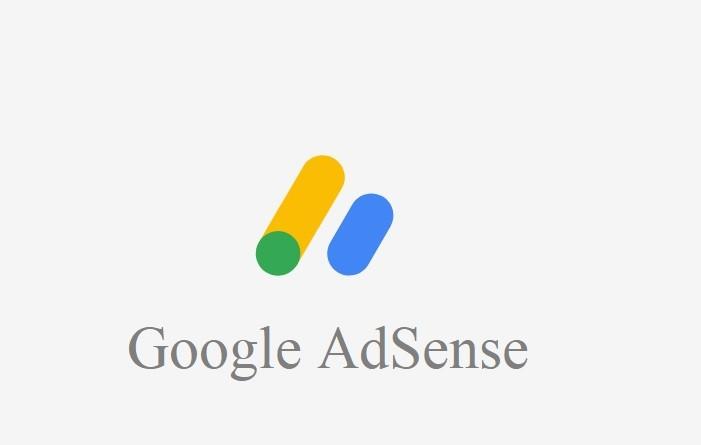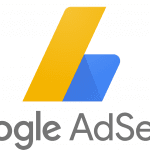Last Updated on June 25, 2025 by admin
Optimizing Google AdSense for higher revenue and better Cost Per Click (CPC) is essential for online publishers. By tapping into Google’s vast user base and diverse advertiser network, content creators can significantly enhance their earnings. The key is to understand and apply the latest trends in ad optimization, effective keyword targeting, and improving user experience.
To effectively increase your Google AdSense earnings and cost-per-click (CPC), it’s essential to start with an understanding of how Google AdSense operates, as well as the fundamental aspects of CPC.
Google AdSense is an advertising program that allows website owners to earn money by displaying targeted ads on their content. Advertisers bid to display their ads on sites that match their target audience, and when users engage with these ads, the website owner earns revenue.
A key factor in this process is the CPC, which denotes the amount advertisers are willing to pay for each click on their ad. A higher CPC typically translates to higher earnings per click for the website owner.
Several factors influence CPC, including the niche of the website and the competition in that field. Niches like finance, health, and technology often command higher CPC rates because advertisers in these industries are willing to pay more to acquire potential customers.
Understanding your audience and curating content that attracts ads from high-paying industries can significantly impact your AdSense earnings. Additionally, ad placement, ad format, and user experience all play crucial roles in determining earning potential.
It is important to analyze metrics and adjust strategies to optimize performance continually. By grasping these basics, you can create a foundation for effectively increasing your AdSense earnings and CPC over time.
Read: How to borrow Data and Airtime from Airtel Nigeria
Optimizing Ad Placement For Better Earnings
Optimizing ad placement is a crucial strategy for increasing Google AdSense earnings and maximizing cost-per-click (CPC). The placement of ads on your website can significantly impact user engagement and click-through rates, which are essential components in driving revenue.
One of the most effective ways to enhance ad performance is by placing ads in locations that naturally attract user attention. For instance, ads situated above the fold, which are visible without requiring users to scroll down, often capture more views and clicks.
Ensuring that these ad units are within the main content flow, rather than isolated in banners or sidebars, can also increase interaction levels. Consider integrating ads within the content itself at strategic points where reader engagement is high, such as after introductory paragraphs or before the conclusion, to take advantage of natural pauses in content consumption. Testing different ad sizes and formats is vital, as larger and more visually impactful ads tend to draw more attention.
Responsive ad units can ensure that ads appear properly on various device screens, enhancing user experience and preventing potential losses from improperly displayed ads.
Additionally, limit the number of ads per page to avoid overwhelming visitors, which can detract from user satisfaction and reduce the likelihood of interaction. Monitoring and adjusting ad placements regularly based on analytic insights can ultimately lead to sustainable increases in AdSense earnings and CPC.
Read: How to Generate first bank Token and activate it
Enhancing Website Content For Higher Cpc
To enhance Google AdSense earnings and boost the Cost Per Click (CPC), refining your website’s content is crucial. High-quality, relevant content attracts advertisers and can lead to higher-paying ads being displayed on your site.
Begin by identifying and targeting profitable niches that naturally attract higher CPCs. Conduct keyword research using tools like Google Keyword Planner to discover high-value keywords related to your topic.
Incorporating these strategically within your content can optimize it for both search engines and AdSense. Diversifying content types—such as integrating articles, videos, and infographics—can increase user engagement, improving metrics like time on site and bounce rates, which are favorable to advertisers.
Regularly updating content to keep it fresh and relevant encourages repeat visits and consistent traffic, ultimately leading to better ad performance.
Crafting compelling headlines and meta descriptions also enhances click-through rates, potentially increasing ad impressions. Furthermore, maintaining a clean, organized site design makes your content more accessible and enjoyable for users, which can positively influence their interactions with ads.
Ensure your website is mobile-friendly, as a significant portion of web traffic comes from mobile devices; this can also impact your AdSense earnings.
Finally, by consistently providing valuable, well-researched content, you foster trust with your audience, which can indirectly lead to increased engagement with displayed ads.
Also read:PayVIS: New Lagos State platform for paying traffic offense and penalties
Utilizing High-Performing Keywords
To increase your Google AdSense earnings and optimize your cost-per-click (CPC), effectively utilizing high-performing keywords is crucial. Keywords are the cornerstone of search engine advertising, and identifying those that perform well can significantly enhance your earnings.
Begin by researching to find high-paying keywords relevant to your content. This involves using tools like Google Keyword Planner, SEMrush, or Ahrefs to identify keywords with a high CPC
Target keywords that not only have a high CPC but also align with the content on your website, ensuring that the ads displayed resonate with your audience.
Once you have a list of high-performing keywords, strategically incorporate them into your content. Ensure that your use of these keywords is natural and enhances the quality of your content, rather than stuffing your pages with keywords, which could lead to penalties from search engines. Create high-quality, engaging content around these keywords to retain visitors on your page, increasing the likelihood of ad clicks.
Regularly monitor the performance of your keywords and adjust your strategy accordingly, by adding new high-performing keywords or removing underperforming ones.
By dynamically adapting your keyword strategy, you can maintain and potentially increase your AdSense revenue over time, leveraging the power of high-performing keywords to drive both traffic and profit.
Implementing Effective Traffic Strategies
To increase Google AdSense earnings and CPC effectively, implementing sound traffic strategies is crucial. The primary step is to attract targeted, high-quality traffic.
This means understanding the demographics and interests of your ideal audience and tailoring content to meet their needs. Content should be both informative and engaging, compelling users to spend more time on your site, thereby increasing the likelihood of ad interaction.
Search engine optimization (SEO) plays a pivotal role in this strategy. By optimizing your website with relevant keywords and creating high-quality backlinks, your site’s visibility on search engines can be improved, driving organic traffic.
Moreover, leveraging social media platforms to share content can significantly boost reach. Social networks such as Facebook, Twitter, Instagram, and LinkedIn offer unique opportunities to connect with different audience segments and drive them to your site by sharing engaging and relevant content.
Additionally, exploring opportunities for collaborations and guest posting on reputable websites can expand your reach to new audiences, thereby diversifying your traffic sources.
It is also essential to analyze traffic data regularly to understand which strategies are most effective, allowing you to adjust your approach accordingly. By focusing on methods to attract specific, interested audiences and maintaining consistent engagement, you can enhance both AdSense earnings and CPC rates systematically.
Monitoring And Analyzing Ad Performance
Monitoring and analyzing ad performance is a crucial component of increasing your Google AdSense earnings and cost per click (CPC). An effective analysis begins with the regular review of your AdSense dashboard, where you can track key metrics such as page views, click-through rates (CTR), and revenue. Understanding these metrics is fundamental to identifying patterns over time.
By examining which ads are attracting the most attention and yielding the best results, you can refine your content and ad placement strategies to better align with what works.
A deep dive into traffic sources can also provide valuable insights. Knowing where your audience comes from allows you to tailor your content to your main traffic sources, thereby potentially increasing engagement and ad clicks.
Additionally, pay attention to ad formats and their performance. Some formats may perform better on certain pages than others, and experimenting with different types can reveal what resonates best with your users.
it’s vital to conduct A/B testing, where you can experiment with various ad styles and placements to determine what combinations lead to higher CPC and more substantial earnings.
Utilize Google Analytics alongside AdSense to gain a comprehensive understanding of user behavior on your site. Through consistent monitoring and iterative testing, you can make informed adjustments that will gradually enhance your AdSense performance and profitability
Mobile phone vs Desktop which earn better in AdSense
The competition between mobile and desktop platforms for AdSense earnings has reached new heights. With the proliferation of smartphones and tablets, mobile devices have become the dominant force in internet usage, significantly impacting how advertisers allocate their budgets and how publishers optimize their content for maximum revenue
This shift towards mobile has had a profound effect on AdSense earnings. Mobile platforms generally boast higher click-through rates (CTR) compared to desktops, with mobile CTR ranging from 2-5% while desktop CTR hovers between 1-3%. Furthermore, mobile ads demonstrate superior conversion rates, often 2-3 times higher than their desktop counterparts, and drive 60-70% of digital ad clicks.
Despite mobile’s dominance in traffic and engagement, desktop platforms maintain certain advantages. Desktops typically achieve higher fill rates and more viewable impressions, contributing to better overall ad performance. Additionally, desktop users tend to spend more time on sites and have lower bounce rates, which can positively influence ad engagement and revenue generation.
| Metric | Mobile | Desktop |
|---|---|---|
| Click-Through Rate (CTR) | 2-5% | 1-3% |
| Traffic Share | 58.67% | 41.33% |
| Ad Blocking Rate | ~15% | ~40% |
However, it’s important to note that mobile traffic is increasing rapidly, and optimizing for mobile can still be very profitable. Balancing both platforms and optimizing ad placements for each can help maximize your overall earnings.








